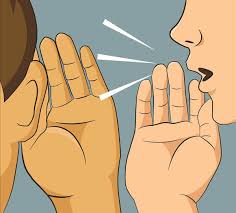Introduction to the Prohibitions of the Mourner (1) – Moed Katan 14b to 16a

We are now going to begin a lengthy series that addresses the various behaviors that a mourner may not engage in during shivva, shloshim and the 12 months. In some ways, this is the bread and butter of Hilkhot Aveilut, as many mourners’ questions involve these topics. As we will see, some of these prohibitions feel intuitive to us today while others speak less readily to the 21st century mourner.
I also want to emphasize the following point: people in Yeshivot often think about the laws of Aveilut as based heavily on minhag. While a few areas are, in fact, driven by long standing communal practice – particularly around matters relating to davening – the vast majority of this material functions as normative Rabbinic law.
Despite the fact one siman asks which aspects of Aveilut are from the Torah and which from the Rabbis, most of these laws are understood to be Rabbinic, with a few exceptions. However, there does appear to be more flexibility in the laws of Aveilut than we might typically expect to find. Nonetheless, we should not read that flexibility as meaning that these are “just” minhagim; instead, that flexibility reflects the Rabbinic understanding that these laws are meant to express and respond to a deep human need.
Over the coming weeks, we will examine a number of key passages from Masechet Moed Katan. The gemara there, from page 14b to 16a, outlines a series of behaviors that are prohibited to the mourner. In each case, the gemara then asks whether a given prohibition also applies to a person who has been excommunicated (menudeh מנודה)1 and a person with tzara’at (מצורע).
These three people – אבל, מנודה, מצורע, a mourner, a person who has been excommunicated and a person with tzara’at – form an interesting group. In what ways are these three types of people similar, and why are they grouped together in this context?
- All of these people are separated from the community in one way or another. The person with tzara’at is quarantined outside of the camp, the one who has been excommunicated is socially ostracized, and the mourner is held up at home.
- Each of these types of people has a very specific ritual that allows them re-enter the community after a certain amount of time has passed.
 Perhaps a more difficult similarity is that the rabbis understood that one who has been excommunicated has certainly done something wrong2. In addition, the one with tzara’at is presumed to have engaged in lashon ha-ra3. When the mourner is placed in this group, we are reminded of the general rabbinic assumption that when someone experiences a loss, the mourner him or herself has done something wrong. Death and suffering are understood to be in response to sin.
Perhaps a more difficult similarity is that the rabbis understood that one who has been excommunicated has certainly done something wrong2. In addition, the one with tzara’at is presumed to have engaged in lashon ha-ra3. When the mourner is placed in this group, we are reminded of the general rabbinic assumption that when someone experiences a loss, the mourner him or herself has done something wrong. Death and suffering are understood to be in response to sin.
This final idea can be difficult to encounter, but it does reflect an important strand of Rabbinic thought. Next time we will take a look at a piece of that lengthy sugya and then try to get a sense of the big picture message that the gemara is communicating.
Footnotes
- This essay was written two weeks ago, in the end of February 2020. As this is about to go live on my Blog my family is at home quarantined because of the C0ronavirus. The notion of being kept at home by your community and thereby having limited physical interactions with people is something that seemed quite theoretical when I wrote this. I pray that those who are infected are able to heal and the spread can be limited.
- When the Bavli seeks a source for the requirement of overturning the bed, it does not quote a Biblical verse but rather a berayta of Bar Kapara that understands this practice as a punishment for sin. See Dr. Chana Friedman’s important dissertation where she makes this point in her insightful approach to this sugya in chapter one around footnotes 94 – 97
- See Sifra Vayikra 5:7. Sifrei Devarim 24:9, piska 271 ed. Finkelstein pg. 294, Erchin 15a, as just the starting point.